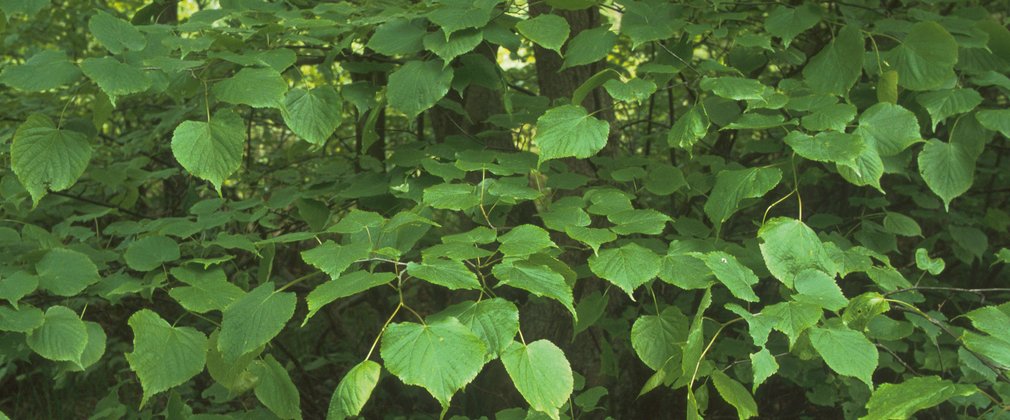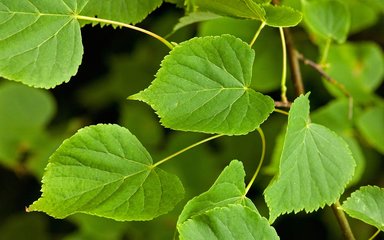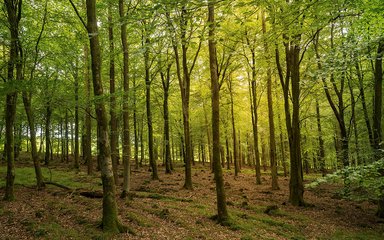
The small-leaved lime tree (no relation to the citrus fruit) has been used for shade and shelter since ancient times. Native to England, Wales and western and central Europe, small-leaved lime trees have a variety of uses. Find out why its timber makes good piano keys, and learn how to recognise one when you're out and about.
Small-leaved lime facts and figures
- living for around 400 years, the small-leaved lime (Tilia cordata) can grow up to about 38 metres.
- old lime trees provide valuable dead wood for beetles and nesting holes for birds.
- the lime's sweet-smelling flowers attract bees, other insects and birds, including woodpeckers.

Small-leaved lime identification tips
Heading out into the forest? Here are some top things to look out for to help you spot the small-leaved lime:
- bark: grey-brown and smooth, although it cracks with age.
- branches: arch downwards.
- leaves: heart-shaped with red-brown tufts on the underside of the vein joints.
- flowers: green-yellow in colour and hang in clusters of up to ten.
- fruit: unlike other limes, the fruit of the small-leaved lime is neither ribbed nor hairy.
How small-leaved lime is used
The pale cream coloured wood of the small-leaved lime is resistant to splitting, making it ideal for turning and carving. The intricate work of famed sculptor and wood carver Grinling Gibbons was often made from lime.
As lime does not warp, its wood is used for the keys and sounding boards of pianos.
In the past, the fragrant flowers of the small-leaved lime were valued for their medicinal properties and also used to make tea.

Did you know? In the past, lime trees were planted along village streets as a holy tree to protect against evil spirits.
Small-leaved lime and future forestry
This broadleaf species was traditionally coppiced, but its popularity as timber declined in the second half of the twentieth century. However, it is resistant to grey squirrel damage so may take on more importance for producing hardwood timber in the future, compared to trees where greater damage impacts their timber.
Known as a 'soil improver' its deep roots access water and nutrients deep within the soil. The lime aphid, which feeds on the undersides of the leaves, deposits a sugary substance known as honeydew (if you've parked under a lime tree in summer, you'll see it on your windscreen). This is also consumed by soil organisms and increases the nutrients around the tree, making it useful for planting within mixed woodlands, improving tree health and growth.
Cool summers have limited its range in Britain, so it may benefit from a warming climate and become more suitable in northern areas in future.

